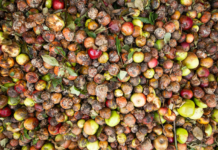
FMCG companies are in dire straits due to rising input costs. They resort to Shrinkflation to tackle the manufacturing costs without passing the hassle to their consumers. In India, major players have opted for Shrinkflation.
With no signs of inflation coming down, customers learn to manage their budgets while purchasing items. But, apart from consumers, inflated prices also heavily affect the manufacturing units. Hence, FMCG companies are looking for new ways to reduce the high costs.
Socio-political factors have burdened the already troubled economy as the prices of raw materials like edible oil, wheat, laminates, and crimpy boxes used for making biscuits, soaps, cosmetics, and detergents are on a hike since the first quarter of FY21.
What is Shrinkflation?
Shrinkflation is cutting back on the quantity, size, and quality of a product to retain the same price. It is common when companies want to manage their products and sales during inflations.
As per Bloomberg, 135 grams of vim soap bar available at Rs 10 weighed 155 grams earlier. Haldiram’s aaloo bhujia pack has been reduced from 55 grams to 42 grams. Retaining the same tariff while reducing the product size is referred to as Shrinkflation as per the information in Business Standard.
Status of Indian Food Market
The wholesale food price index increased from 8.81% in March to 8.88% in April. Ritesh Tiwari, the chief financial officer of Hindustan Unilever, stated to the journalists of Business Standard that a reduction in volume per pack is the only way to combat an increase in manufacturing costs.
Akshay D-Souza from Bizom told Business Standard that when a company is fiddling with the pricing points that are laid open concerning the revenue, it is a calculative risk leading to a loss in the market share. He also said that tea and a small biscuit pack are meal substitutes in India for many people.
Importance of Magic Price Points for FMCG companies
Mohit Malhotra from Dabur India considers Rs 1, 5, and 10 as ‘sacred price points’, and Ritesh Tiwari from HUL called them Magic Price points. He told Business Standard that we get to know the importance of the price points by understanding how low unit packs support the sales of the FMCG companies.
Britannia gets 50% to 55% of business from Rs 1, 5, and 10 packs, whereas Parle products get a massive 70% of its sales and income from Rs 10 packs. On the other hand, HUL receives 30% of its business from Rs 1, 5, and 10 packs. These price points hold high importance in the biscuits and snacks industry, but most companies opt for reducing the weight of Rs 10 packets.
Customers are not affected much by the hikes for packs above Rs 20. Parle cut the weight down and increased prices by 7% to 8%. Varun Berry from Britannia has conveyed to Business Standard that India has a lot of customers at the bottom layer. However, profits from Rs 2 and Rs 3 packets have shifted to Rs 5 and above.
Many companies are implementing a new strategy called bridge pack. HUL has started the Lifebuoy soap with a new size priced between Rs 10 and Rs 35, which gives better satisfaction to consumers and profits to companies. Many companies are trying several ways to cope with the inflation, however, they have to go for package cuts to maintain their market stand.
IndiFoodBev — authentic, impactful and influential
An English-language food and beverage processing and packaging industry B2B platform in print and web, IndiFoodBev is in its third year of publication. It is said that the Indian food and beverage industries represent approximately US$ 900 billion in revenues which implies more than 20% of the country’s GDP. Eliminating the wastage on the farmside can help to deliver more protein to a higher number of the population apart from generating sizable exports. The savings in soil, seeds, water, fertilizer, energy and ultimately food and nutrition could be the most immense contribution that country is poised to make to the moderation of climate change.
To improve your marketing and grow sales to the food and beverage processing and packaging industry, talk to us. Our research and consulting company IppStar [www.ippstar.org] can assess your potential and addressable markets in light of the competition. We can discuss marketing, communication, and sales strategies for market entry and growth.
Suppliers and service providers with a strategy and budget for targeted marketing can discuss using our hybrid print, web, video, and social media channels to create brand recognition linked to market relevance. Our technical writers are ready to meet you and your customers for content.
The second largest producer of fruit and vegetables in the world is continuously expanding processing capacities and delivery systems with appropriate innovative technologies. We cover product and consumer trends, nutrition, processing, research, equipment and packaging from farm to thali. Get our 2025 media kit and recalibrate your role in this dynamic market. Enhance your visibility and relevance to existing markets and turn potential customers into conversations. Ask for a sample copy of our bi-monthly in print or our weekly IndiFoodBev eZine each Wednesday.
For editorial info@ippgroup.in — for advertisement ads1@ippgroup.in and for subscriptions subscription@ippgroup.in
Naresh Khanna – 10 February 2025
Subscribe Now











